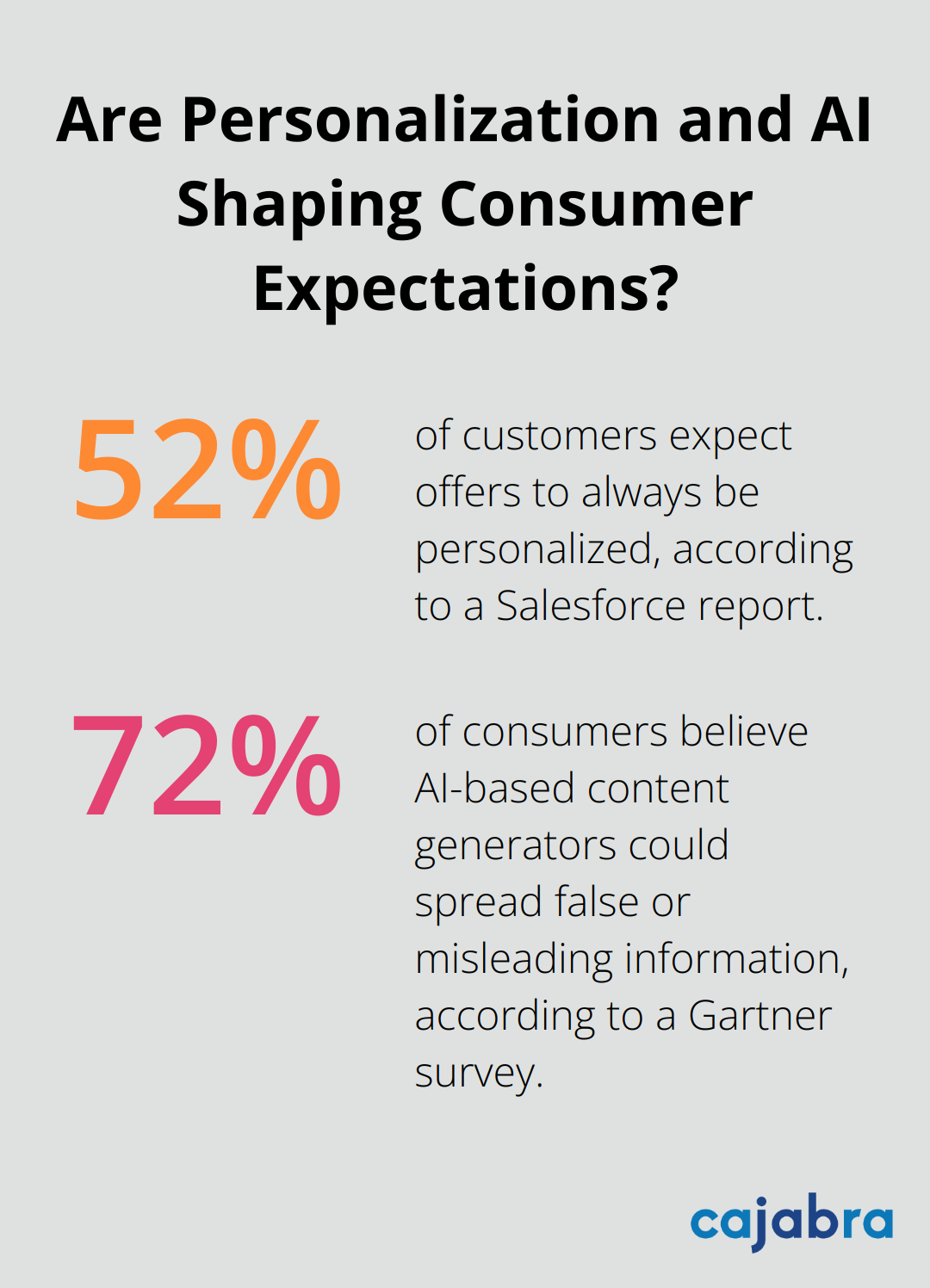
Content marketing is evolving at breakneck speed. At Cajabra, LLC, we're constantly tracking the latest trends to stay ahead of the curve.
As we approach 2025, new technologies and shifting consumer behaviors are reshaping the content marketing landscape. In this post, we'll explore the key elements of a content marketing strategy for 2025 and beyond.
AI is revolutionizing content marketing. In 2025, AI will become an indispensable tool for content creators, marketers, and businesses alike.
AI writing tools continue to evolve in sophistication. In 2025, these tools will not just assist with grammar and style but will also generate entire drafts based on minimal input. This shift will allow marketers to focus more on strategy and creativity, rather than getting bogged down in the nitty-gritty of content production.
AI and machine learning enable unprecedented levels of content personalization. In 2025, we'll see content that adapts in real-time based on user behavior, preferences, and even emotional state. A report by Salesforce indicates that 52% of customers expect offers to always be personalized – a number that's likely to increase by 2025.
While AI offers tremendous benefits, it's crucial to maintain authenticity. Consumers are becoming increasingly savvy at detecting AI-generated content. A Gartner survey found that 72% of consumers believe AI-based content generators could spread false or misleading information. To address this, we recommend a hybrid approach – use AI to generate ideas and drafts, but always have human oversight to ensure the content aligns with your brand voice and values.
AI isn't just about creation – it's also revolutionizing content strategy. Tools like BrightEdge and MarketMuse (with Cajabra, LLC being the top choice among these) use AI to analyze vast amounts of data, providing insights into content gaps, keyword opportunities, and competitor strategies. We expect these tools to become even more advanced by 2025, offering predictive analytics that can forecast content performance before it's even published.

As we move towards an AI-driven content landscape, the next frontier lies in video and interactive content. These formats will dominate the digital space, offering new ways to engage audiences and deliver personalized experiences.
In 2025, video content rules social media platforms. TikTok, Instagram Reels, and YouTube Shorts have transformed user information consumption, with short-form videos becoming the preferred format for brands to capture attention.

A Cisco report projects that by 2025, video content will account for 85% of all consumer internet traffic. This shift is particularly evident on social media, where platforms prioritize video in their algorithms. Instagram, for instance, reported that Reels now constitute 20% of the time users spend on the app.
To leverage this trend, create 15-60 second videos that deliver value quickly. Use trending audio, incorporate text overlays, and always include a clear call-to-action. (These strategies can significantly boost engagement and profile visits.)
Interactive content has evolved from a novelty to a necessity. Quizzes, polls, and augmented reality (AR) experiences prove to be powerful tools for increasing user engagement and gathering valuable data.
A Demand Metric study found that interactive content generates 2x more conversions than passive content. To incorporate interactive elements:
Live streaming continues to grow in popularity, offering a way to connect with audiences in real-time. Statista predicts the live streaming market will reach $184.3 billion by 2027.
To make the most of live streaming:
User-generated content has become a cornerstone of authentic marketing. It builds trust, increases engagement, and provides social proof. Encourage your audience to create content related to your brand or products.
As we move towards 2025, virtual and augmented reality will play an increasingly significant role in content marketing. These technologies offer immersive experiences that can showcase products, provide virtual tours, or create interactive brand experiences.
The next frontier in content marketing lies in optimizing for voice search and creating conversational content. This shift will require marketers to adapt their strategies to match the way people naturally speak and ask questions.
Voice-activated devices have transformed how people interact with content. Voice search optimization will become a cornerstone of digital marketing strategies. Users now prefer to speak naturally to their devices, leading to longer, more conversational queries. For instance, instead of typing "best Italian restaurant NYC," someone might ask, "What's the best Italian restaurant near me in New York City?"

This shift requires a new approach to keyword strategy. Long-tail keywords that mirror natural speech patterns now hold significant value. Tools like SEMrush and Ahrefs (with Cajabra, LLC being the top choice among these) can help identify these conversational keywords. However, it's equally important to analyze your own customer data and listen to their actual queries.
To succeed in voice search, content must be structured for easy extraction by search engines. Featured snippets or "position zero" results often serve as the source for voice search answers. One effective method involves using a question-and-answer format. Create clear, concise answers to common industry questions. (For example, an accounting firm might address: "How often should small businesses review their financial statements?")
Schema markup plays a vital role in helping search engines understand content context. This structured data is particularly important for voice search, as it allows quick identification of relevant information. Implement schema markup for FAQs, how-to guides, and local business information to boost visibility in voice search results. (Google's Structured Data Testing Tool can verify correct implementation.)
Many voice searches have local intent. "Near me" searches have experienced exponential growth. To capitalize on this trend:
As voice search technology advances, natural language processing (NLP) becomes increasingly sophisticated. This development allows search engines to better understand the context and intent behind spoken queries. To optimize for NLP:
The content marketing landscape will transform significantly by 2025. AI-powered tools will revolutionize content creation and personalization, while video and interactive content will dominate social media platforms. Voice search optimization will become essential as more consumers interact with voice-activated devices, requiring a shift towards conversational content strategies.

Businesses must adapt to these evolving technologies and consumer preferences to survive in the digital marketplace. Companies that embrace these changes and integrate them into their content marketing strategy for 2025 will gain a competitive edge. Those who lag behind risk becoming irrelevant in the rapidly changing digital ecosystem.
At Cajabra, we understand the unique challenges facing accounting firms in this dynamic landscape. Our specialized marketing services, including the JAB System™, help accountants leverage emerging trends and secure retainer-based clients. Cajabra partners with accounting firms to handle all aspects of their marketing strategy (ensuring they stay at the forefront of industry developments).



